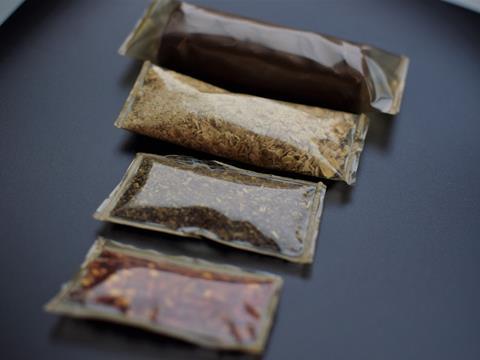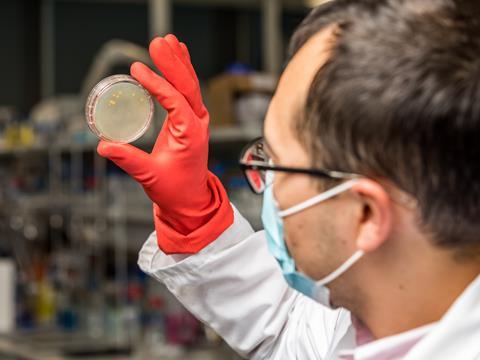
Earlier this month, we reported on a new film developed by the University of Cambridge and Xampla that is made from 100% plant protein and requires no additives. We caught up with Dr Marc Rodriguez Garcia, Xampla’s Head of Research, to find out if the solution really has the potential to replace conventional plastics.
To start us off, please could you introduce this new solution to us?
Our technology is the culmination of 15 years’ research at Cambridge University where we were looking to understand how nature generates high-performance materials from proteins. The result is a plant-based protein material that has a mechanical strength comparable to some conventional fossil-fuel-derived plastics, but is entirely natural and requires no chemical modification.
With this technology, we’re in a unique position to say we’ve created a plastic-like high-performance material that doesn’t pollute – at the beginning or end of life.
We can source the plant protein as a by-product of the agriculture and food industries, and the resulting material can be metabolised by various microorganisms in any natural environment just like any other naturally occurring polymer, such as cellulose. This material can also be developed into edible products, given that no chemical modification is required.
What motivated the research team to develop this product, and what opportunities did you identify in planning?
In the beginning, the motivation was purely an interest in understanding the fundamental properties that allow proteins to be structured into high-performance materials in nature. We were inspired by spiders’ silk, which is weight-for-weight stronger than steel, and one of the strongest materials in nature.
When we discovered we could assemble plant proteins into a molecular structure very similar to spider silk, the potential to have a global impact on the plastic crisis became our focus.

The technology leverages plant proteins in the form of a spider’s silk-like structure. Can you explain how this works in practice and give us some insights into the R&D process?
The strength found in spiders’ silk is a result of the regularly spaced non-covalent hydrogen bonds between the protein molecules at a very high density. Proteins have a propensity to self-assemble and the spider simply leverages protein and energy to create its high-performance material, silk. The team discovered how to make the polypeptide chains that make up plant proteins self-assemble in this way.
The outcome is a naturally derived polymer material created by taking a plant protein, such as pea isolate, and adding concentrated vinegar, heat and energy. This combination creates a material that is strong, flexible, and transparent; much like conventional plastic.
In terms of functionality, what applications is the product suited to, and how does it perform when compared with conventional plastics?
Our mission is to replace everyday single-use plastics and intentionally added microplastics, and we’re constantly developing new applications for our material like flexible packaging films, sachets, and microcapsules.
We can formulate materials to meet the requirements of different applications. Our initial focus is on replacing fossil-fuel-derived polymers such as Polyvinyl alcohol where we broadly compare to their current performance, but with a completely naturally occurring material that will simply be metabolised by microorganisms in any natural environment.
I’d like to talk a bit about end of life – how long does the material take to decompose and what is left behind? How would you recommend it be disposed of?
Our material decomposes in the environment naturally and fully and is a source of protein for living things. We’ve designed it to be home composted. In a lot of other bio-based plastic alternatives, chemical crosslinking is used to give a material the functionality of plastic, and this can compromise end-of-life sustainability by slowing degradation. Our material doesn’t require any chemical crosslinking, so there’s no trace of it after it’s disposed of.
What does the future hold for the film – how are you looking to make the product truly scalable?
Xampla is the commercial spin-out from Cambridge University responsible for developing new product applications and scaling the technology. We have a number of leading tech investors helping us drive this forward, alongside a rapidly growing team with the technical and commercial expertise needed to scale at a global level.
We’re developing our material as a drop-in solution. We need to work with current supply chain players to reach scale, and offer them a material that performs as closely as possible to their current materials. So, our resins can be manufactured into films in standard solvent-casting processes. And our films can be made into sachets and other applications by converters with standard processes.
Major brands are being forced by impending regulation and consumer demand to hardwire sustainability into their business models, and there is an ongoing and increasingly urgent global shift away from fossil fuels. We see our material as the go-to single-use plastic substitute for the post-oil world, and we’re putting everything in place now to ensure our solution is there for the pioneering brands ready to make the shift.















